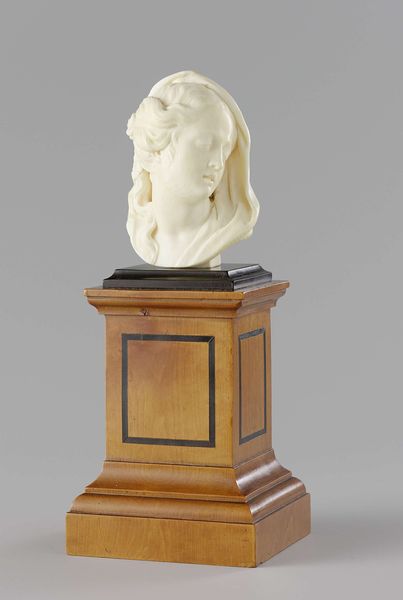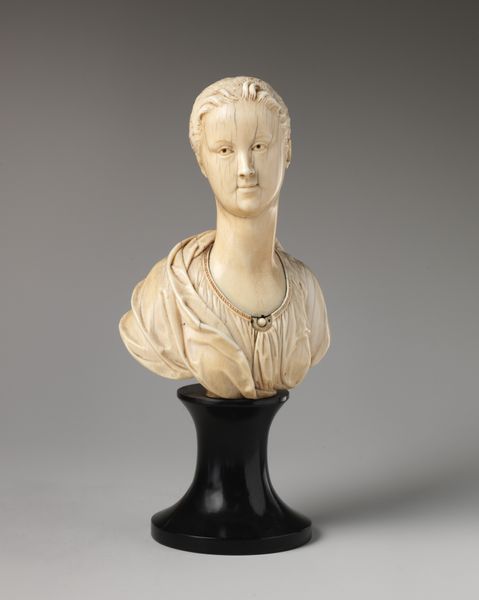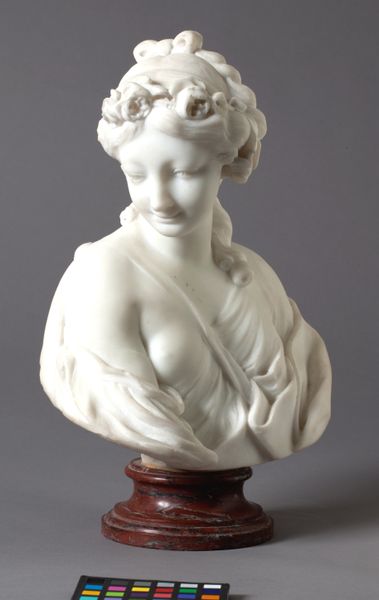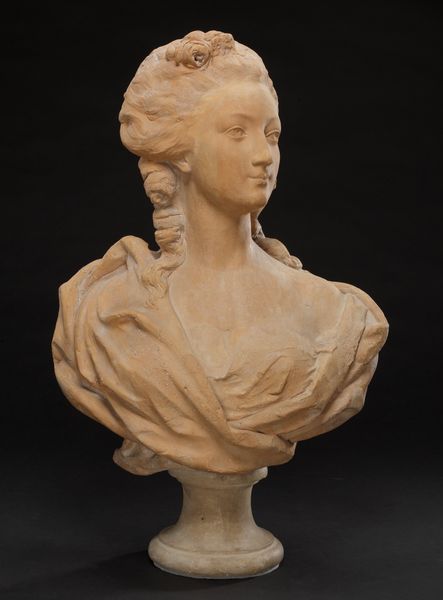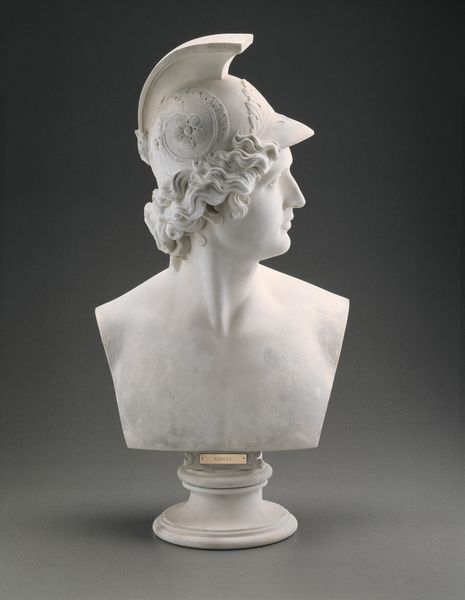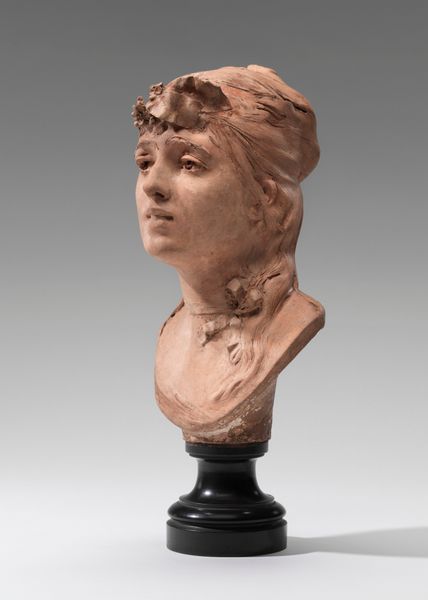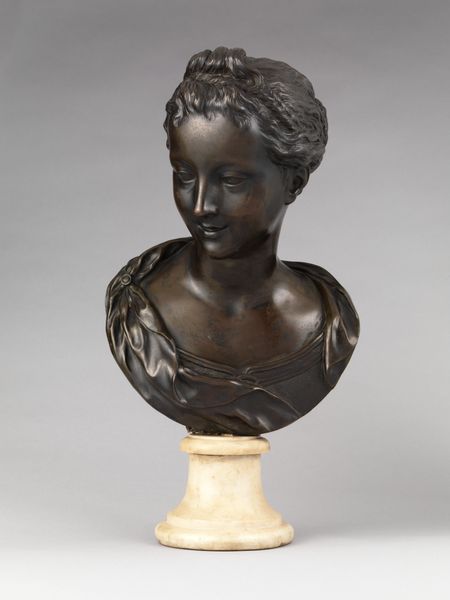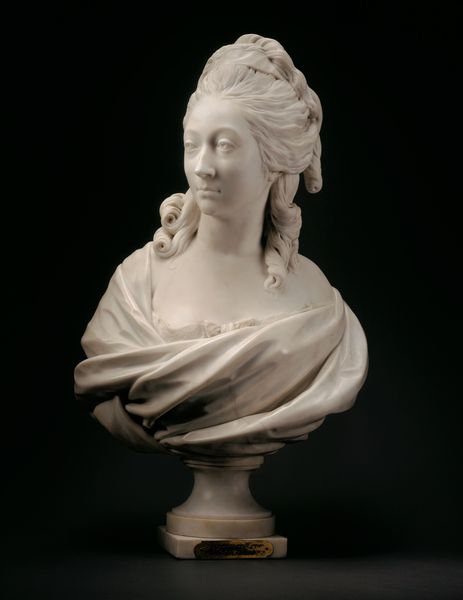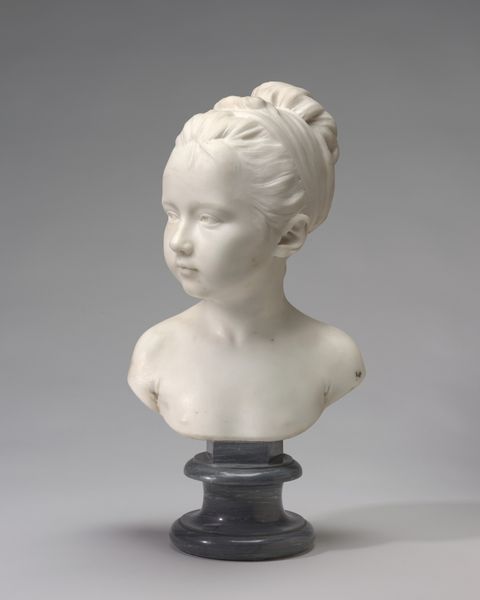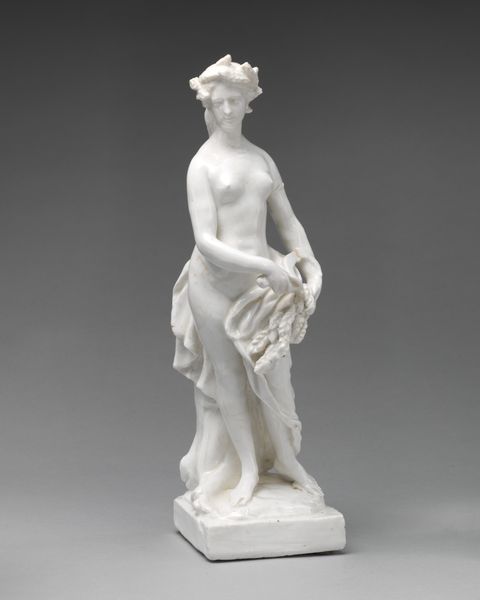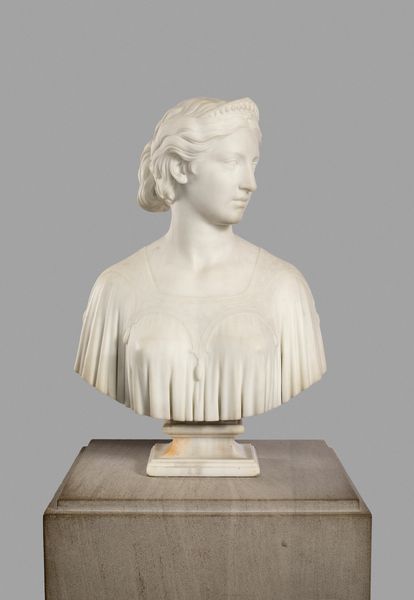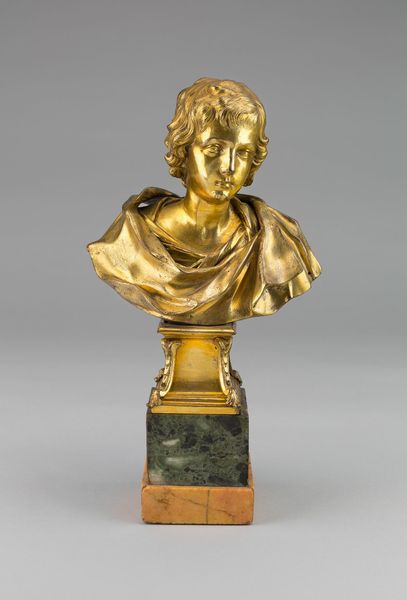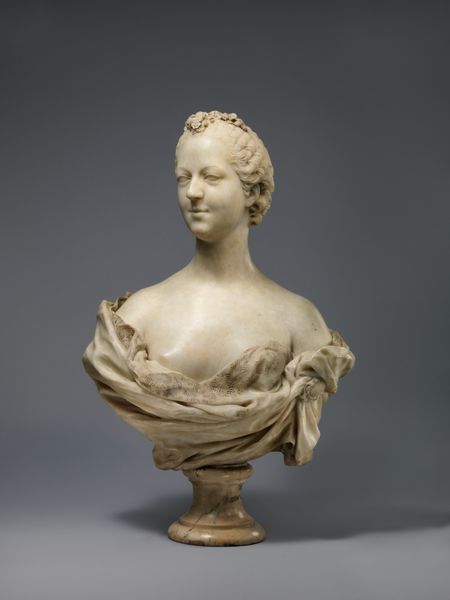
ceramic, sculpture, marble
#
portrait
#
baroque
#
ceramic
#
sculpture
#
ceramic
#
history-painting
#
marble
Dimensions: height 8.5 cm, height 22 cm
Copyright: Rijks Museum: Open Domain
Jan Baptist Xavery made this small marble bust in the first half of the 18th century. The title "Cleopatra and Lucretia" suggests it represents both Cleopatra, the famous Egyptian queen, and Lucretia, a virtuous Roman noblewoman. This combination is intriguing. In the 1700s, society had very specific ideas about women's roles. Cleopatra was seen as powerful but dangerous, while Lucretia was the model of female virtue and self-sacrifice. The choice to pair them invites us to explore contemporary beliefs about women, power, and morality. Xavery worked primarily in the Dutch Republic, and this sculpture reflects the tastes of the time. To understand this piece fully, we might research popular literature, theater, and political pamphlets from the period. By considering the artwork in its original social and intellectual context, we can gain insight into the public role of art and the politics of imagery.
Comments
rijksmuseum about 2 years ago
⋮
Jan Baptist Xavery, court sculptor in The Hague, was exceptionally versatile. In addition to funerary monuments, portrait busts, marble mantelpieces and even furniture, he made refined figurines in wood and ivory, such as these Classical female heads. They represent famous beauties from antiquity, Cleopatra and Lucretia, both of whom took their own life, one out of shame, the other out of sorrow.
Join the conversation
Join millions of artists and users on Artera today and experience the ultimate creative platform.
